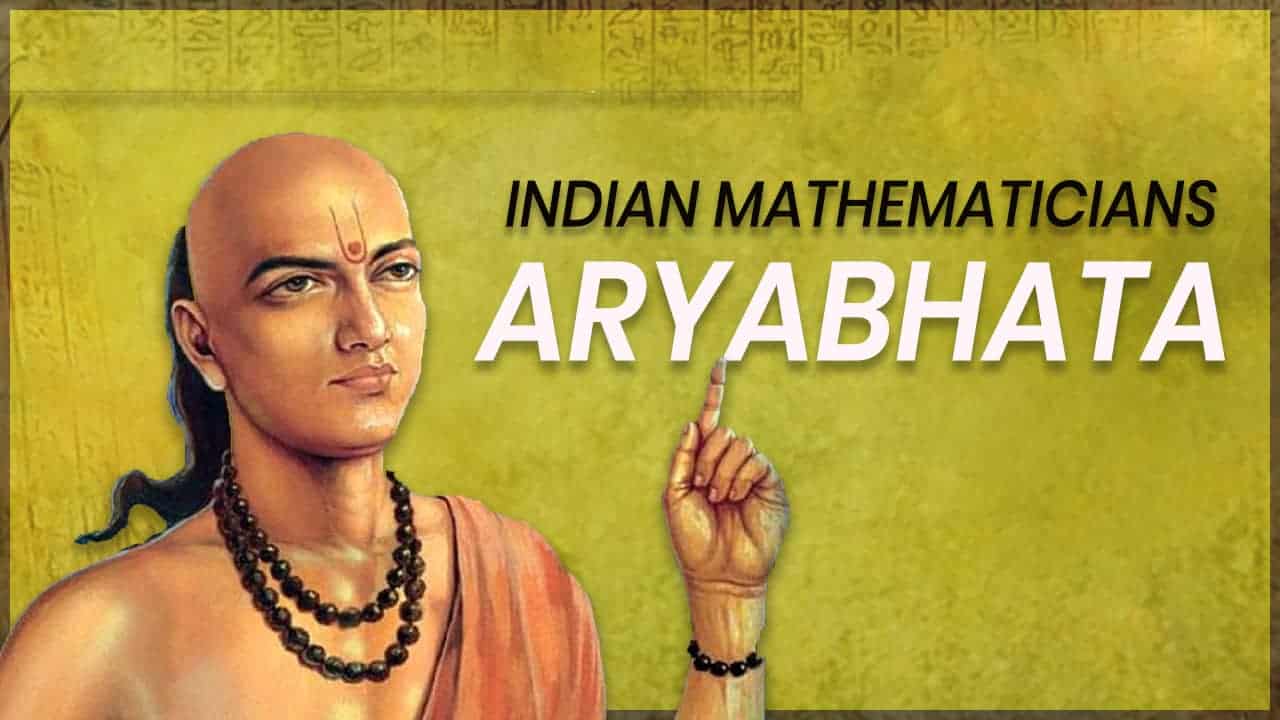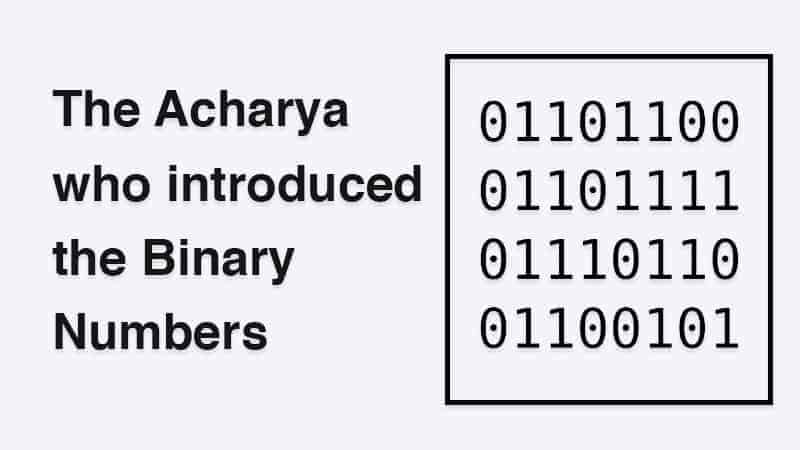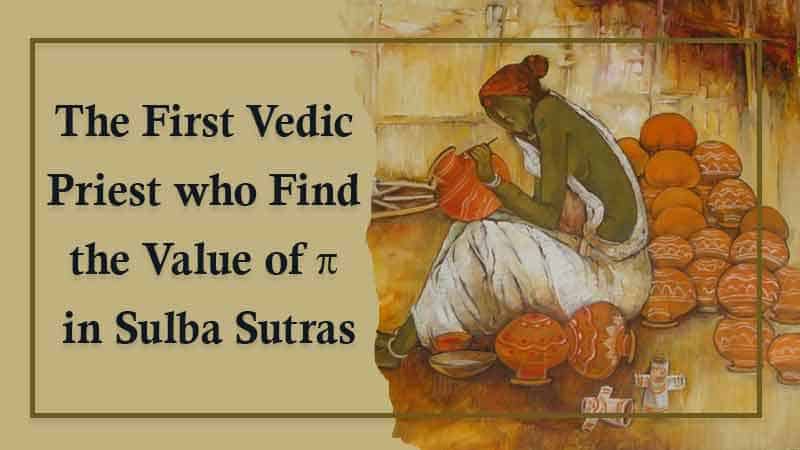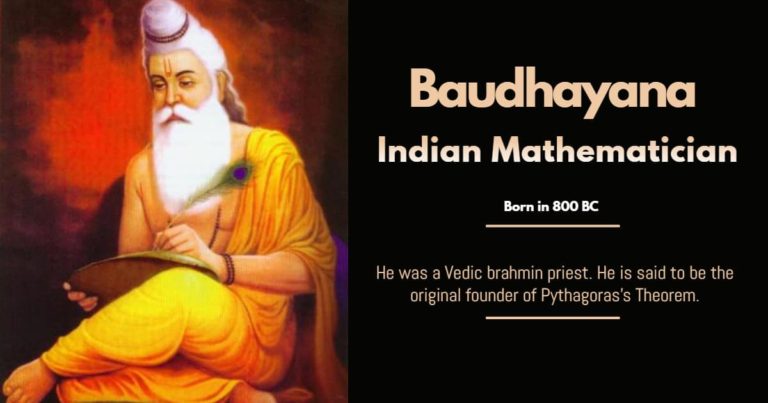India Great Mathematicians of All Time
There are Many Mathematics Genius Born in India from Start of the History. Here we are Going to Provide Some of the Great Indian Mathematician of all time.
India is the land of Mathematicians. Many Great Mathematicians were born in this holy land. Indian mathematicians have not only contributed to India’s growth but have also made a global impact, inspiring mathematicians, astrologers, astronomers, and scientists around the world. There are many Indian Mathematicians because of whom many great inventions and discoveries in science and other fields have been possible.
Srinivas Ramanujan
Srinivas Ramanujan is a great Indian Mathematician who was born in South India. From an early age in his life, he started reading books by great mathematicians. He was awarded many prizes in mathematics.
Though he was sharp and genius, he didn’t have much interest in other subjects. Eventually, he started making his career in mathematics. He closely worked with many Foreign Mathematicians like G.H. Hardy.
Hardy believed that working with Srinivasa Ramanujan—especially finding and supporting his talent—was the most important thing he ever did in mathematics. He once said that meeting Ramanujan was “the one romantic episode” of his life.
When Ramanujan was ill, G.H. Hardy came to India to see him. There, they had a small discussion that would be remembered as one of the famous stories in mathematics. In that discussion, they came up with a number called Ramanujan- Hardy Number.
Ramanujan died at a very young age, but the contribution that he has given to India and the world in the field of mathematics is immense. He is also known as the mathematician who knew infinity. He would always be remembered as one of the greatest Indian Mathematicians.
To know more about Srinivas Ramanujan, read here.
Jagadguru Shankaracharya Sri Bharati Krishna Tirthaji Maharaja
He is considered the founder of Vedic Mathematics. He left his home when he was young and went into the deep forest to meditate. With the power of meditation and with his talent, he has written the book, which later became Vedic Math. He then started teaching mathematics to the world. His disciples used to call him Gurudeva.
Vedic Mathematics was born in India, which was done by Jagadguru Shankaracharya Swami Bharati Krishna Tirtha. The book,which is written by him, is famous throughout the world with the name of “Vedic Math Book“
To know more about Sri Bharati Krishna Tirthaji Maharaja, read here.
Shakuntala Devi
She is considered as one of the most talented and confident female Indian Mathematicians. She once even challenged a computer and even proved that the computer was not only slow but also gave incorrect answers. She could do all the complex calculations in seconds. Not only that, but she also had a great memory.
She could remember large numbers and could even recite the same number in the reverse order. Her talent was recognized by her father when she was young and she was showing the game of cards to the audience at the circus. Though she didn’t have a formal education, she taught many students. She even wrote books for children. Here is the list of books written by her.
Aryabhatta
Aryabhata was among the first few Indian Mathematicians who belonged to the classical age. He was born in 476 AD, Pataliputra, which is located at Bihar near Patna. He has written two books when he was at the age of 24, which are famously known as Aryabhaṭīya and Arya-Siddhanta.
Inspired by his work, The then prime minister of India, Indira Gandhi has decided to keep the name of the first Indian Satellite under his name.
To know more about Aryabhatta, read here.
Brahmagupta
Among the Greatest Indian Mathematicians who first worked on algorithmics, algebra, trigonometry, and geometry was Brahmagupta. Brahmagupta was born in 598 CE in Bhillamala, which is located in the Jalore District in Rajasthan. He has written
- Brāhmasphuṭasiddhānta
- Khandakhadyaka
To know more about Brahmagupta, read here.
Madhava of Sangamagrama
A Mathematician from South India who has started up a school on mathematics can’t be forgotten. His works have been stolen by many foreign mathematicians. A few of his famous works are:
- Venvaroha
- Aganita-grahacara
- Chandravakyani
- Lagnaprakarana
- Mahajyanayanaprakara
- Madhyamanayanaprakara
- Golavada
- Sphutacandrapti
To know more about Madhava of Sangamagrama, read here.
Mahavira
The Jain mathematician of India who was born in 815 AD was one of the first few mathematicians who is still praised for the works He taught mathematics to his disciples. Know more about Mahavira.
Note: Don’t get confused with the Lord Mahavira and the Mathematician Mahavira. Both are completely different.
Popular Modern Mathematicians in India

Aryabhata I was the first of the major Mathematician-Astronomers from the classical age of Indian Mathematics and Indian Astronomy
Read More »P.C. Mahalanobis
Prasanta Chandra Mahalanobis (29 June 1893 – 28 June 1972) was a renowned Indian scientist and statistician. As a key member of India’s first Planning Commission, he played a major role in shaping the country’s development plans after independence. He is best known for introducing the Mahalanobis distance, an important concept in statistics.
He also made important contributions to anthropometry—the study of human body measurements—in India. Mahalanobis was the founder of the Indian Statistical Institute (ISI) and helped design methods for conducting large-scale surveys. Due to his phenomenal work, he is often called the Father of Indian Statistics.
To know more about Brahmagupta, read here.
Calyampudi Radhakrishna Rao
Prof. Calyampudi Radhakrishna Rao (10 September 1920 – 22 August 2023) was a highly respected Indian-American mathematician and statistician. He served as Professor Emeritus at Pennsylvania State University and Research Professor at the University at Buffalo.
Over the years, he received numerous awards, honorary degrees, and was celebrated with academic events in his honor. In 2002, he was awarded the U.S. National Medal of Science.
The American Statistical Association called him a “living legend,” acknowledging his wide-ranging influence in fields like economics, medicine, anthropology, genetics, national planning, and more.
In 2023, he received the prestigious International Prize in Statistics, often compared to the Nobel Prize in statistics. He was also actively involved in public health as a senior advisor to the Indian Heart Association, working to raise awareness about heart disease in South Asians.
The Times of India listed him among the top 10 Indian scientists of all time—a true icon in the world of data and numbers.
To learn more about him, read here.
D. R. Kaprekar
Dattatreya Ramchandra Kaprekar (17 January 1905 – 1986) was a self-taught Indian mathematician who made a name for himself in the world of recreational mathematics. Even though he worked as a schoolteacher and had no formal postgraduate education, his passion for numbers led him to discover many interesting patterns in mathematics.
Kaprekar introduced several special types of numbers, such as Kaprekar numbers, Harshad numbers, and self numbers (also called Devlali numbers). One of his most famous discoveries is Kaprekar’s constant, which is named in his honor.
He studied in Thane and later at Fergusson College in Pune, where he won the Wrangler R. P. Paranjpye Mathematical Prize in 1927 for his original contribution. Working mostly on his own, Kaprekar explored number theory deeply and also created unique forms of magic squares, including one inspired by the Copernicus magic square.
To know more about D. R. Kaprekar, read here.
Satyendranath Bose
Satyendra Nath Bose (1 January 1894 – 4 February 1974) was a renowned Indian physicist and mathematician, well-known for his groundbreaking work in quantum mechanics during the early 1920s. His work laid the foundation for what we now call Bose–Einstein statistics and led to the development of the Bose–Einstein condensate theory.
He excelled in academics and consistently ranked first, with Meghnad Saha, who later became a famous astrophysicist, coming in second. He drew great inspiration from prominent teachers like Jagadish Chandra Bose, Prafulla Chandra Ray, and Naman Sharma, who encouraged him to pursue excellence.
In recognition of his contributions to science, Bose was honored as a Fellow of the Royal Society and received the Padma Vibhushan—India’s second-highest civilian award—in 1954.
To know about his work and life, read here.
Narendra Karamkar
Narendra Krishna Karmarkar, born around 1956, is a well-known Indian mathematician who made a major contribution to the field of linear programming. He is most famous for inventing Karmarkar’s algorithm, one of the first polynomial-time algorithms that solved linear programming problems using an interior point method.
Karmarkar introduced this algorithm in 1984 while working at Bell Laboratories in New Jersey. He also taught as a mathematics professor at MIT in 1991 and spent time at the Institute for Advanced Study in Princeton in 1996. From 1998 to 2005, he held the position of Homi Bhabha Chair Professor at the Tata Institute of Fundamental Research (TIFR) in Mumbai.
To know about Karmarkar, read here.
Radhanath Sikdar
Radhanath Sikdar (5 October 1813 – 17 May 1870) was a brilliant Indian mathematician, best known for being the first person to calculate the height of Mount Everest in 1852. His exceptional talent in mathematics earned him international recognition.
In 1864, two years after his retirement, the Bavarian branch of the German Philosophical Society for Natural Science made him a Corresponding Member in his honor. Sikdar passed away on 17 May 1870 in Chandernagore, where he was laid to rest at the Sacred Heart Cemetery.
To know about Radhanath Sikdar, read here.
Harish-Chandra
Harish-Chandra Mehrotra (11 October 1923 – 16 October 1983) was a renowned Indian-American mathematician and physicist. He made significant contributions to representation theory, particularly in harmonic analysis on semisimple Lie groups.
He was born in Kanpur and studied at B.N.S.D. College and later at the University of Allahabad. After completing his master’s degree in physics in 1940, he joined the Indian Institute of Science in Bangalore to continue his studies under the guidance of Homi J. Bhabha.
Throughout his career, Harish-Chandra earned wide recognition. He became a member of the National Academy of Sciences, a Fellow of the Royal Society, and in 1954, he was honored with the Cole Prize by the American Mathematical Society for his outstanding work.
To know about Radhanath Sikdar, read here.
Ganesh Prasad
Ganesh Prasad (15 November 1876 – 9 March 1935) was a well-known Indian mathematician who made important contributions to various areas such as the theory of potentials, real functions, Fourier series, and surface theory. He studied at the famous Universities of Cambridge and Göttingen, where he received advanced mathematical training.
After returning to India in 1904, he became a mathematics professor at Muir Central College in Allahabad. Ganesh Prasad played a key role in promoting mathematical research in India, earning him the title “Father of Mathematical Research in India”.
To know about Ganesh Prasad, read here.
What Next?
We have just listed out the list of a few mathematicians over here. Eventually, we shall list out other mathematicians too and will be updating them shortly. If you want to know about any Indian Mathematicians, then you can feel free to ask us in the comment section and we shall be ready to reply to you.
Reference and Conclusion:
For more information about Indian Mathematicians, read the article written by the Brown Education Center. Hope you like this article. Thanks for Reading.
Frequently Asked Questions (FAQs) about India's Great Mathematicians
Who is considered the greatest mathematician in India?
Srinivasa Ramanujan is widely regarded as one of the greatest mathematicians India has produced. His groundbreaking work in number theory and infinite series has earned him international recognition.
What is Vedic Mathematics?
Vedic Mathematics, founded by Jagadguru Shankaracharya Sri Bharati Krishna Tirthaji Maharaja, is a system of mathematics based on ancient Indian texts. It offers unique techniques for solving mathematical problems more quickly and efficiently.
What are some major contributions of P.C. Mahalanobis?
P.C. Mahalanobis is credited with establishing the Indian Statistical Institute (ISI) and developing the Mahalanobis distance. He also played a key role in India’s economic planning after independence.
Who was Shakuntala Devi?
Shakuntala Devi, known as the “Human Computer,” was a renowned Indian mathematician capable of performing complex calculations in her head. She even once outperformed a computer in solving a math problem.
What did D.R. Kaprekar contribute to mathematics?
D.R. Kaprekar was a self-taught Indian mathematician known for discovering Kaprekar’s constant, along with his work on magic squares and number theory.
How did Harish-Chandra impact the world of mathematics?
Harish-Chandra made significant contributions to representation theory and harmonic analysis, particularly in the study of semisimple Lie groups. His work is fundamental to modern mathematical physics.
Why is Ramanujan known as the mathematician who knew infinity?
Srinivasa Ramanujan’s work on infinite series and continued fractions revolutionized mathematics, leading to major advancements in number theory and mathematical analysis. His contributions to the understanding of infinity continue to inspire mathematicians worldwide.
How did Madhava of Sangamagrama contribute to Indian mathematics?
Madhava, a mathematician from Kerala, made significant contributions to trigonometry and calculus long before these concepts were formally introduced in Europe. His work influenced later mathematicians, including Newton and Leibniz.
Vedic Maths Live Classes
Book your Free Session
We had Trained 12K+ Students








